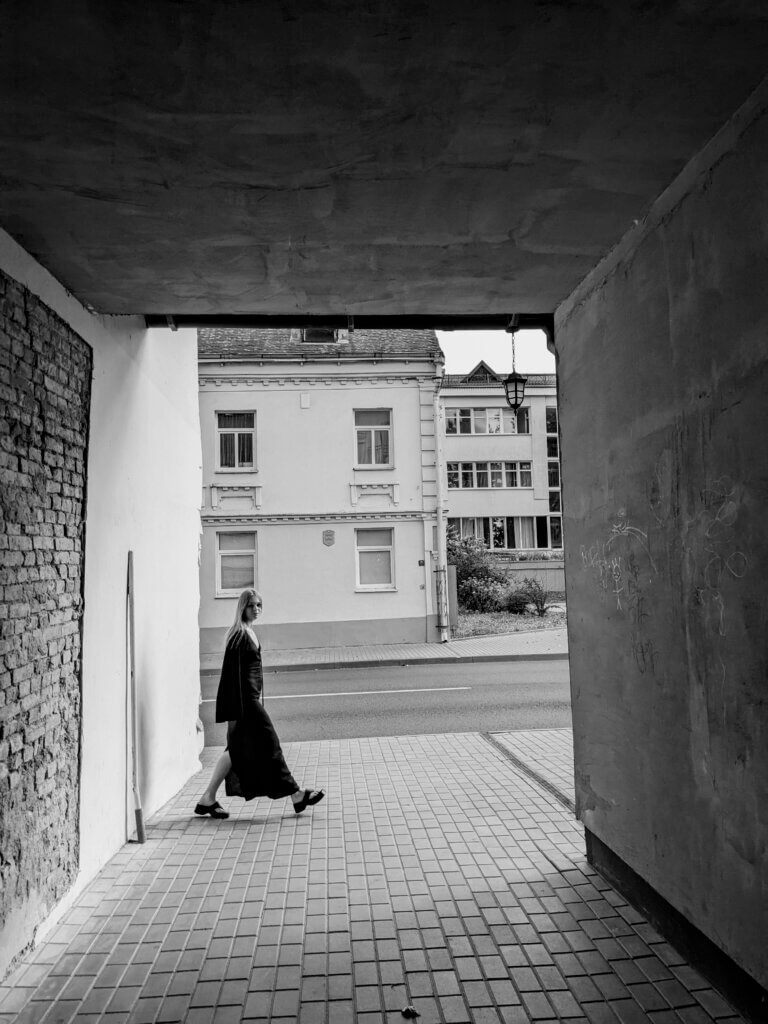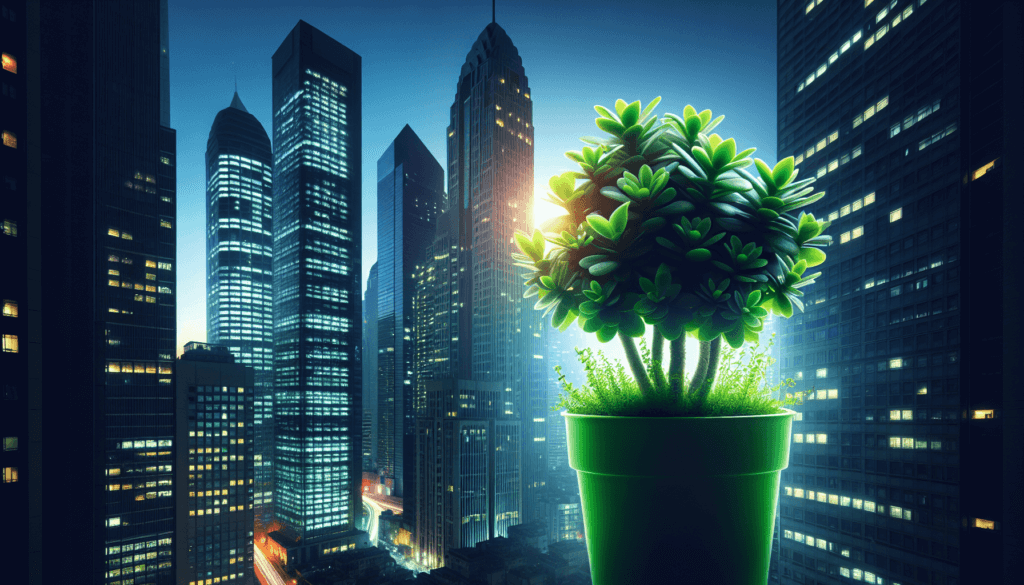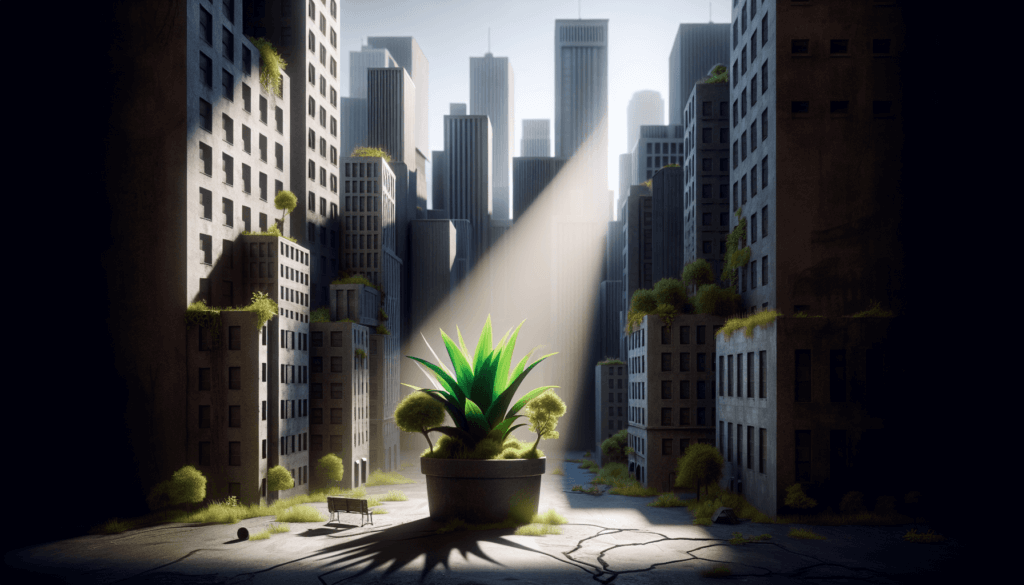Are you an enthusiastic urban gardener looking to make the most of limited sunlight? Look no further! In this article, we will explore the best plants that thrive in urban environments with minimal access to sunlight. Whether you have a small balcony or a restricted outdoor space, these plants will bring life and beauty to your urban oasis. From leafy greens to flowering plants, we have curated a list of the perfect green companions that will flourish even in the shade. So, grab your gardening gloves and get ready to turn your urban space into a vibrant and thriving garden!
1. Succulents
Succulents are a popular choice for urban gardens with limited sunlight due to their ability to thrive in low-light conditions. These plants have thick, fleshy leaves, stems, or roots that store water, allowing them to survive in dry environments. There are several types of succulents that are well-suited for urban gardens with limited sunlight. Some examples include Echeverias, Haworthias, and Jade Plants.
Types of succulents that thrive in limited sunlight
Echeverias are one of the most common types of succulents known for their rosette-shaped leaves. They come in a variety of colors, including shades of green, blue, purple, and pink. Haworthias, on the other hand, have a more compact growth habit with distinctive patterns on their leaves. They are great for small containers or hanging baskets. Jade Plants, also known as Crassulas, are known for their thick, glossy leaves and tree-like appearance. They are excellent for indoor gardening as they can tolerate low-light conditions.
How to care for succulents in urban gardens
When it comes to caring for succulents in urban gardens with limited sunlight, it’s important to provide them with the right growing conditions. Succulents thrive in well-draining soil, so make sure to use a soil mix specifically designed for succulents or cacti. It’s also essential to provide adequate drainage to prevent waterlogged roots. Water your succulents sparingly, allowing the soil to dry out between waterings. Finally, place your succulents in a location that receives indirect sunlight for a few hours a day. If indoor gardening is your preference, consider using artificial grow lights to supplement the lack of natural sunlight.
2. Ferns
Ferns are another excellent choice for urban gardens with limited sunlight. These plants have a unique beauty and can add a touch of elegance to any space, even in low-light conditions. There are various varieties of ferns that are well-suited for urban environments with limited sunlight. Some examples include the Maidenhair Fern, Bird’s Nest Fern, and Boston Fern.
Varieties of ferns suitable for low-light conditions
The Maidenhair Fern is known for its delicate, lacy fronds that add a soft and airy feel to any room. It thrives in moist environments and can tolerate low-light conditions. The Bird’s Nest Fern, named for its nest-like appearance, is a popular choice for indoor gardening. Its broad, leathery leaves create a lush and tropical feel, even in low-light settings. The Boston Fern is a classic choice for hanging baskets and has feathery fronds that create a cascading effect. It prefers high humidity and indirect sunlight, making it suitable for urban gardens with limited sunlight.
Tips for growing ferns in urban environments
To successfully grow ferns in urban environments with limited sunlight, it’s important to replicate their natural habitat as closely as possible. Ferns thrive in environments with high humidity, so consider misting them regularly or placing them on a pebble tray filled with water. It’s also crucial to provide them with well-draining soil and avoid overwatering, as ferns are susceptible to root rot. Finally, place them in a location that receives indirect sunlight or bright, filtered light to ensure healthy growth.

3. Spider Plants
Spider plants are popular houseplants that are well-suited for urban gardening in low-light settings. They are known for their arching leaves, which often have a striped or variegated pattern. Spider plants are not only visually appealing but also have air-purifying properties, making them a great addition to any urban garden.
Characteristics of spider plants
Spider plants, scientifically known as Chlorophytum comosum, are easy to care for and can adapt to various growing conditions. They have long, slender leaves that arch gracefully and produce small, white flowers. Spider plants also produce plantlets or “spiderettes” that dangle from the mother plant, giving them a unique appearance.
Caring for spider plants in low-light settings
Spider plants are incredibly versatile and can tolerate a range of light conditions, including low-light settings. However, they thrive best in bright, indirect sunlight. In urban environments with limited sunlight, it’s essential to place spider plants near a window that receives a few hours of indirect light each day. Water spider plants when the top inch of the soil feels dry, ensuring that you don’t overwater them. Spider plants also appreciate higher humidity levels, so misting them occasionally or grouping them together can help create a more humid microclimate.
4. Peace Lilies
Peace lilies, also known as Spathiphyllum, are an excellent choice for urban gardens with limited sunlight. These elegant plants have glossy, dark green leaves and produce beautiful, white flowers. Peace lilies are not only aesthetically pleasing but also have air-purifying properties, making them a popular choice for indoor gardening.
Why peace lilies are ideal for urban gardens with limited sunlight
Peace lilies are known for their ability to tolerate low-light conditions, making them an ideal choice for urban gardens with limited sunlight. They can survive and even bloom with as little as moderate indirect light. Peace lilies are also relatively easy to care for and can adapt to a variety of growing conditions, making them suitable for both beginner and experienced gardeners.
Maintaining peace lilies in low-light conditions
To maintain peace lilies in low-light conditions, it’s important to provide them with proper care. Place peace lilies in an area where they receive indirect light or bright, filtered light for a few hours a day. Avoid exposing them to direct sunlight, as it can scorch their leaves. Water peace lilies when the top inch of the soil feels dry and mist their leaves occasionally to increase humidity. Additionally, keep an eye out for any signs of overwatering or underwatering, as peace lilies are sensitive to both extremes.

5. Snake Plants
Snake plants, also known as Sansevieria or mother-in-law’s tongue, are excellent choices for urban gardening in limited sunlight. These plants have long, sword-like leaves that come in various shades of green and yellow. Snake plants are not only visually striking but also have several benefits that make them an attractive choice for urban environments.
Benefits of snake plants in urban gardening
Snake plants have several benefits that make them desirable for urban gardening in limited sunlight. Firstly, they are known for their ability to purify the air by removing toxins such as formaldehyde, benzene, and trichloroethylene. Snake plants are also very low-maintenance and can tolerate a wide range of growing conditions, including low-light environments. Additionally, they are drought-tolerant and do not require frequent watering, making them perfect for busy urban dwellers.
Proper care and maintenance of snake plants in limited sunlight
Snake plants are very resilient and can tolerate low-light conditions, but they still require some care to thrive. Place snake plants in a location that receives indirect light or even artificial grow lights if natural sunlight is not available. These plants prefer well-draining soil, so ensure that their pot has drainage holes to prevent waterlogging. Snake plants can withstand drought, so water them only when the soil is completely dry. Be cautious not to overwater, as this can lead to root rot. Lastly, snake plants are sensitive to cold temperatures, so avoid exposing them to drafts or extremely low temperatures.
6. Pothos
Pothos, scientifically known as Epipremnum aureum, is a popular choice for urban gardens with limited sunlight. These trailing plants have heart-shaped leaves that come in various shades of green, and some varieties have variegated foliage with splashes of white, yellow, or cream. Pothos is not only visually appealing but also very easy to care for, making it an excellent choice for beginner gardeners.
Suitable pothos varieties for urban gardens with limited sunlight
Several pothos varieties are well-suited for urban gardens with limited sunlight. The Golden Pothos, also known as Devil’s Ivy, is one of the most common and easy-to-grow varieties. Its heart-shaped leaves have golden variegation, adding a pop of color to any space. Another suitable variety is the Marble Queen Pothos, which has striking white and green marbled foliage. The Neon Pothos is a bright and vibrant variety with lime green leaves that can brighten up any room.
Tips for keeping pothos healthy in low-light settings
To keep pothos healthy in low-light settings, it’s important to provide them with the right growing conditions. Pothos can tolerate low-light environments, but they thrive best in bright, indirect light. Place pothos near a north-facing window or in a location that receives a few hours of filtered sunlight each day. Water pothos when the top inch of the soil feels dry, ensuring that you don’t overwater them. These plants can tolerate occasional periods of drought but prefer consistently slightly moist soil. Finally, fertilize pothos once a month during the growing season to encourage healthy growth.

7. ZZ Plants
ZZ plants, scientifically known as Zamioculcas zamiifolia, are well-suited for urban gardening in limited sunlight. These plants have attractive, glossy green foliage that can add a touch of lushness to any space, even in low-light conditions. ZZ plants are not only visually appealing but also very low-maintenance, making them perfect for busy urban dwellers.
Features of ZZ plants in urban gardening
ZZ plants have several features that make them desirable for urban gardening in limited sunlight. Firstly, they can tolerate a range of light conditions, including low-light environments where other plants may struggle to thrive. ZZ plants are also known for their ability to withstand drought, making them a great choice for those who may forget to water their plants regularly. Additionally, they are relatively pest-resistant and can adapt to various indoor environments, including homes and offices.
Cultivating and nourishing ZZ plants in limited sunlight
To cultivate and nourish ZZ plants in limited sunlight, it’s important to provide them with the right care. While ZZ plants can tolerate low-light conditions, they still require some exposure to light. Place ZZ plants in a location that receives indirect light or bright, filtered light for a few hours a day. However, be cautious not to expose them to direct sunlight, as it can scorch their leaves. Water ZZ plants sparingly, allowing the soil to dry out between waterings. These plants can withstand long periods of drought, so it’s better to underwater than to overwater them. Finally, ZZ plants are slow-growing and do not require frequent fertilization. Fertilize them only once or twice a year with a balanced houseplant fertilizer.
8. English Ivy
English Ivy, scientifically known as Hedera helix, is an excellent choice for low-light urban environments. This trailing vine has dense, dark green foliage that can add a touch of elegance to any space, even in limited sunlight. English Ivy is not only visually appealing but also has several advantages that make it a popular choice for urban gardening.
Advantages of growing English Ivy in low-light urban environments
Growing English Ivy in low-light urban environments has several advantages. Firstly, English Ivy is a versatile plant that can be grown in hanging baskets, as ground cover, or even trained to climb walls or trellises. Its dense foliage also acts as a natural air purifier, helping to filter toxins from the air. English Ivy is also relatively low-maintenance and can tolerate a variety of growing conditions, including low-light environments.
Practical advice for growing and maintaining English Ivy
To grow and maintain English Ivy in low-light urban environments, it’s important to provide them with the right care. English Ivy prefers indirect or filtered light, so place them in a location that receives a few hours of indirect sunlight each day. While English Ivy can tolerate drought, it’s important to water them regularly, keeping the soil consistently moist but not waterlogged. Ensure that the pot has good drainage to prevent waterlogging. English Ivy also appreciates higher humidity levels, so misting them occasionally or placing them on a pebble tray filled with water can help create a more humid microclimate. Lastly, prune English Ivy regularly to keep it in shape and to prevent it from becoming invasive.

9. Philodendrons
Philodendrons are another popular choice for urban gardens with limited sunlight. These plants have an array of attractive foliage that comes in various shapes, sizes, and colors. Philodendrons are not only visually appealing but also relatively low-maintenance, making them an excellent choice for both beginner and experienced gardeners.
Popular philodendron species to grow in limited sunlight
Several philodendron species thrive in limited sunlight and are well-suited for urban gardens. The Heartleaf Philodendron, scientifically known as Philodendron hederaceum, is a versatile variety with heart-shaped, glossy green leaves. It can tolerate a range of light conditions, including low-light environments. Another popular variety is the Philodendron Brasil, which has variegated foliage with shades of green and yellow. The Split-Leaf Philodendron, or Monstera deliciosa, is a striking philodendron variety known for its large, fenestrated leaves that create an exotic tropical look.
How to provide proper care for philodendrons in urban gardens
To provide proper care for philodendrons in urban gardens with limited sunlight, it’s important to replicate their natural habitat as closely as possible. Philodendrons prefer bright, indirect light, so place them near a north or east-facing window that receives a few hours of indirect sunlight each day. They can tolerate lower light conditions, but their growth may be slower and foliage color may fade. Philodendrons prefer well-draining soil, so make sure to use a potting mix that drains well to prevent waterlogged roots. Water philodendrons when the top inch of the soil feels dry and avoid overwatering. Finally, philodendrons appreciate higher humidity levels, so misting them occasionally or using a humidifier can help create a more conducive growing environment.
10. Begonias
Begonias are excellent choices for low-light urban gardening, thanks to their ability to thrive in limited sunlight conditions. These plants have attractive foliage and produce vibrant, showy flowers, making them a beautiful addition to any urban garden.
Why begonias are excellent choices for low-light urban gardening
Begonias are excellent choices for low-light urban gardening for several reasons. Firstly, they can tolerate low-light conditions and can thrive even with minimal sunlight. Begonias are also available in a wide range of varieties, including Rex Begonias, Angel Wing Begonias, and Dragon Wing Begonias, each with unique foliage and flower characteristics. Moreover, begonias are relatively low-maintenance and are known for their long blooming periods, providing consistent color and beauty to your urban garden.
Essential tips for growing begonias in limited sunlight
To successfully grow begonias in limited sunlight, it’s important to provide them with the right care. Place begonias in a location that receives bright, indirect light or filtered light for a few hours a day. While begonias can tolerate lower light conditions, they may require additional artificial grow lights to supplement the lack of natural sunlight. Water begonias when the top inch of the soil feels dry, ensuring that you don’t overwater them. Overwatering can lead to root rot. Begonias prefer well-draining soil, so use a potting mix specifically designed for begonias or add perlite to improve drainage. Finally, fertilize begonias regularly during the growing season to promote healthy foliage and continuous blooming.
In conclusion, there are several plant choices for urban gardening in limited sunlight. From succulents like Echeverias and Jade Plants to ferns like Bird’s Nest Ferns and Boston Ferns, these plants can thrive in low-light conditions. Spider plants, peace lilies, snake plants, pothos, ZZ plants, English ivy, philodendrons, and begonias are also excellent choices for urban gardens with limited sunlight. By providing the right care and maintaining optimal growing conditions, you can enjoy the beauty and benefits of these plants in your urban garden, even without direct sunlight. Happy gardening!



